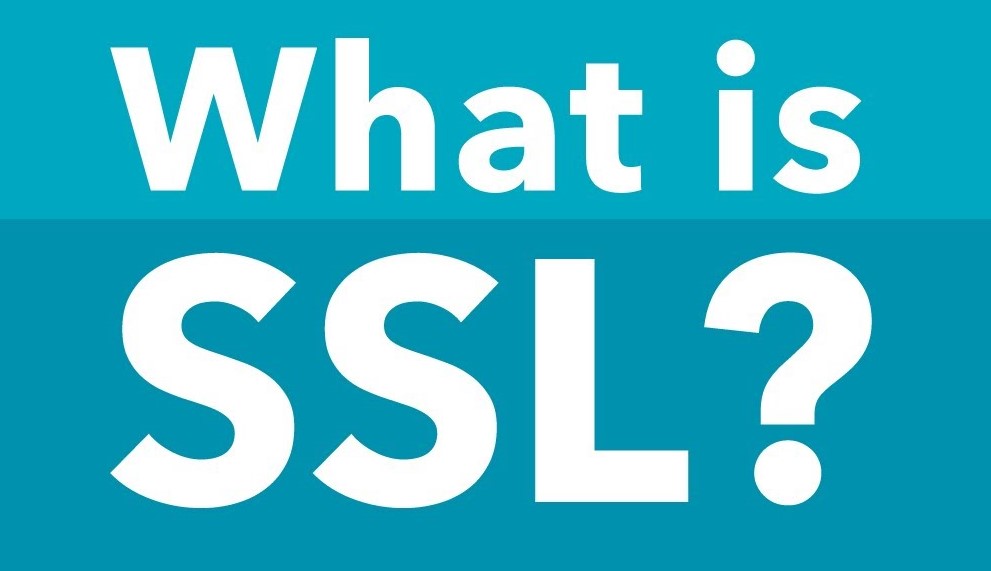I hope you’ve already noticed that certain URLs begin with ‘HTTP://’ and others begin with ‘HTTPS://’. You might have noticed the additional ‘s’ while using websites that need you to provide personal data, such as when making payments online.
Essentially, the additional ’s’ indicates that your connection and data transferred to that website are protected and encrypted. It also ensures that any information that you enter is safely exchanged with that website, with proper encryption. Secure Sockets Layer or SSL is the technology behind the ’s’.
In this article, we’ll dive deep into SSL, its types, functions, and advantages. So, let’s begin.
What does mean by SSL (Secure Sockets Layer)
SSL stands for Secure Sockets Layer. It’s a protocol that ensures that data transferred between servers and web browsers is kept secret. This is accomplished through the use of an encrypted link between the server and the browser.
When you visit an SSL-encrypted website, your browser establishes a connection with the web server, checks the SSL certificate, and then binds your browser to the server. This secure connection guarantees that only you and the website can view or access the information you enter. The degree of authentication and encryption offered OR the number of domains or subdomains covered by the certification is used to classify SSL certificates. Let’s take a closer look at the types of SSL certifications now.
What Are the Types of SSL Certification?
A Certificate Authority (CA), which is software built particularly for operating and giving certificates, processes these certificates.
There are three types of encryption and validation certificates: domain, organization, and extended validation. The varieties of certificates based on the domain number include single, multidomain, and wildcard. We’ll go over each of them one by one.
Extended Validation (EV) Certificate
To avoid being misinterpreted as a spam website, this certificate displays the padlock symbol, HTTPS, and the name and registered country of the business in the address bar.
Extended Validation (EV) SSL certificates are the most costly, but they are useful for demonstrating the authenticity of your website in the address bar. To get an EV SSL, you’ll need to show that you have permission to use the domain you’re submitting. This assures consumers that you are lawfully gathering the information required to complete specific tasks, such as a credit card number for an online purchase.
Organization Validated (OV) Certificate
This certifies that your company and URL are legitimate. These certificates are obtained in two phases and provide a moderate degree of security. The CA first checks who controls the site and if the company is functioning lawfully. Visitors can see a tiny green lock with the company’s name after it in their browser’s address bar.
Domain Validation (DV) SSL Certificate
This is the quickest validation available, and it just requires a few corporate papers to apply. This verification takes place when you add a DNS to the Certificate Authority. The CA examines the claimant’s right to own the site that is filed for certification. A green padlock next to the URL in the address bar indicates that the DV certificates provide a modest degree of encryption.
Wildcard Certificates
Wildcard SSL Certificates are classified as “domain and subdomain number.” If you acquire certification for one domain, you may use it for the other subdomains as well. This is way more cost-effective than getting several SSL certificates for a single domain.
Unified Communications (UCC) Certificate
They are also known as Multi-domain SSLs. Multiple domain names can be on the same certificate thanks to UCCs. They were originally designed to connect a single server and browser. But with time, their use has subsequently grown to accommodate numerous domain names owned by the same person.
To ensure that the site is verified, a UCC in the address bar displays the symbol of a lock. They can also be classified as an EV Certificate if the green text, padlock, and country of origin are displayed. The only difference is the number of domain names that this certificate is connected with.
Single Domain Certificate
Only one domain or website is protected with the Single Domain certification. It can’t use to secure subdomains or a whole other domain. So this is to be kept in mind while filing for a certification. Now that we know the types of SSL Certification available, let’s see how SSL actually works.
The Working Principle of SSL
The basic ideas that SSL is based on are asymmetric and symmetric cryptography.
What is Asymmetric Cryptography?
To encrypt and decode data, asymmetric cryptography employs a numerically linked key pair. A key is shared with everyone involved in contact in a key pair. This is the Public Key. The Private Key is the key in the key pair that is kept hidden.
Asymmetric cryptography allows data to be authenticated using a private key. It can only be deciphered with the other one of the pair, which is the public key.
What is Symmetric Cryptography?
Symmetric cryptography involves the encryption and decryption of data using only one key. This secret key is shared by both the sender and the receiver.
How is Data Transferred Over SSL?
To transport data securely, the SSL protocol employs both asymmetric and symmetric cryptography. The SSL handshake and the substantive data transmission are the two key phases in SSL interaction between the browser and the server. The data transfer can also occur between two systems other than the mentioned ones.
What is SSL Handshake?
The SSL handshake is always the first step in every SSL interaction. The SSL handshake is asymmetric cryptography. It allows the browser to authenticate the web server, obtain the public key, and securely make a connection before the data transmission begins.
Both the sender and receiver have a verified session key at the end of the SSL handshake. The keys are used to encode and/or decode the real data. After then, neither the public nor the private key is utilized.
How is Data Actually Transferred?
For encryption, decryption, and transmission of the actual data, the sender and the receiver utilize a shared session key. It is a part of symmetric cryptography since it uses the same session key on both sides.
Why You Should Use SSL – The Advantages
High Security
The main aim of SSL certification is to encode data to ensure only the intended recipients can read it. Information sent via the internet has a significant risk of falling into the hands of unwanted users.
The SSL certification makes sure the data is encrypted, Even if invaders obtain the data packages, they will be unable to comprehend or use them. As a result, SSL is perfect for securing sensitive data including user details, passwords, and payment details.
Multi-Step Authentication
On the internet, data passes through numerous parties. As a result, it is more likely to be read by undesired private entities. SSL ensures that whatever data package is on your site, is delivered to the proper server. By serving as a middleman between systems, the server certificates (the ones we already discussed above) ensure that the SSL certificate provider is trusted.
High Reliability
An SSL certificate offers authentication whenever it is used on a website. As a result, when people visit a site, they get assurance that it is genuine and not a hoax. A green lock appears in the URL bar when a site is SSL authenticated. This padlock indicates that the site has implemented security protocols and is trustworthy enough to process transactions.
Prevention of Data Phishing
Users may occasionally get phishing emails (often disguised as advertising or shipping confirmations) that contain hyperlinks to some other website. These websites exist only to collect sensitive information such as credit card numbers. Obtaining a valid SSL certificate is pretty hard for these sites. Visitors who do not see an SSL certificate are unlikely to input any private details.
Search Engine Optimization
An SSL certificate is one of the things that can help you improve your search engine rankings. The Google search algorithm ranks sites having SSL certificates higher in the Search Engine Result Pages (SERPs). Most sites that have an SSL certificate have a high Google ranking. It helps to rank your website and important Factor of On-page SEO.
Bottom Line
You should always check the encryption state every time you visit a website. Personally, I like knowing that I can check if my data is secure by clicking a little lock icon that appears on the address tab. On the other hand, if you work for a company that doesn’t have SSL certificates, you should make it a priority to get them as soon as possible. It is to make sure you can safeguard your clients’ data and privacy, as, on the internet, privacy is what matters the most.































































